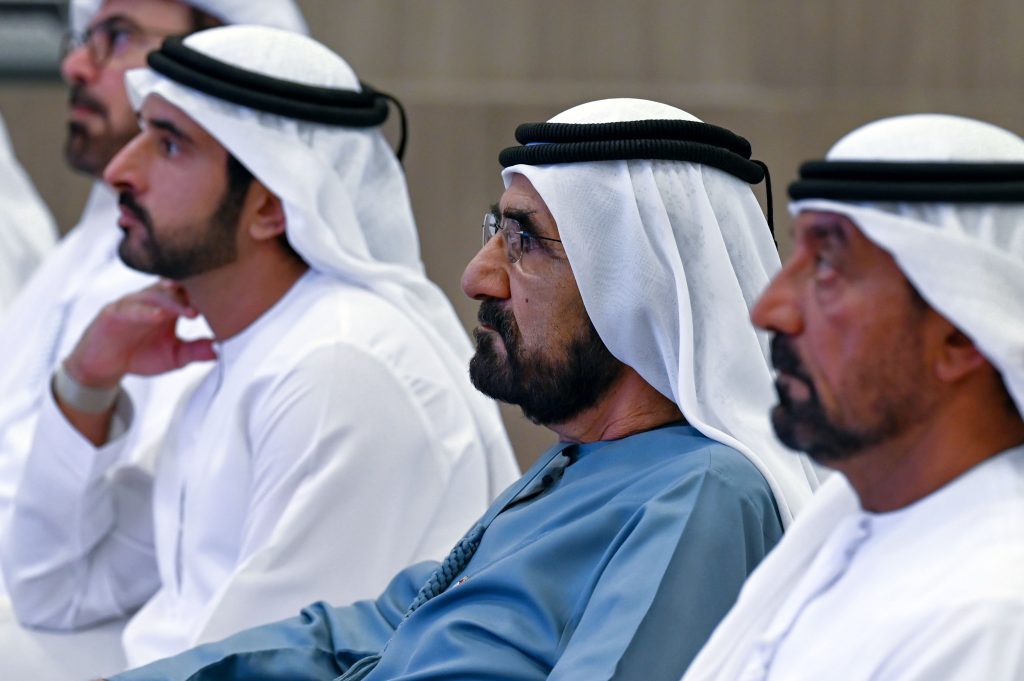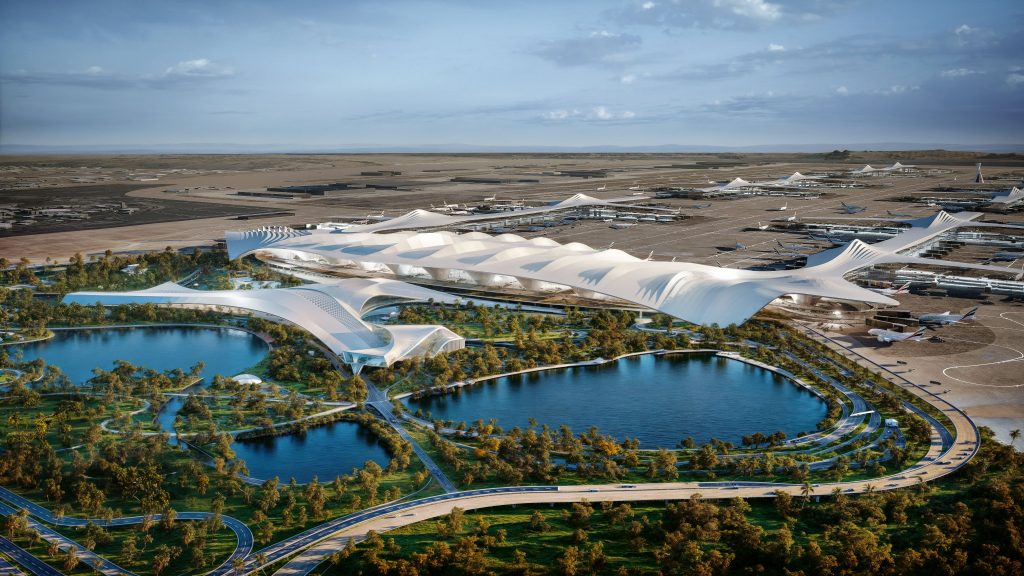In a grand announcement, Sheikh Mohammed Bin Rashid Al Maktoum, the Prime Minister of the United Arab Emirates and ruler of Dubai, unveiled plans for the construction of what promises to be the world’s largest airport terminal.


The Grand announcement
Sheikh Mohammed’s recent tweet encapsulated the magnitude of this undertaking: “Today, we approved the designs for the new passenger terminals at Al Maktoum International Airport, and commencing construction of the building at a cost of AED 128 billion as part of Dubai Aviation Corporation’s strategy.”
Named after the visionary leader himself, the Al Maktoum International Airport is set to redefine the very concept of air travel infrastructure.
With an estimated cost of approximately $35 billion, the airport is poised to become not just a transportation hub but a symbol of Dubai’s unwavering commitment to progress and innovation.
Unseen Scale
The scale of the Al Maktoum International Airport is nothing short of breathtaking. Envisioned to feature five parallel runways and a staggering 400 aircraft gates, this architectural marvel will surpass all existing airports in both size and functionality.
Rendered images of the terminal reveal a design inspired by the iconic Bedouin tents of the Arabian Peninsula, blending tradition with modernity in the known Dubai fashion.
The necessity for such a colossal project comes from the undeniable reality that Dubai International Airport, currently the world’s busiest for international travel, has reached its maximum capacity, and additional expansion is impossible due to its location in the city center.
The Business Model
It’s not just about scale; it’s also about redefining the very business model of airports. Paul Griffiths, CEO of Dubai Airports, hinted at a revolutionary approach:
“We are not planning an airport that has terminals. We’re going to completely change the business model for airports, make them actually far more intimate, and get rid of all the legacy processes that we’ve had to subject our customers to for far too long.”
Indeed, the Al Maktoum International Airport is poised to become the centerpiece of a larger scheme called Dubai South, transforming the surrounding desert landscape into a thriving city.
With plans for eight specialized neighborhoods catering to various industries and activities, Dubai’s vision extends far beyond mere transportation infrastructure.
Rising Competition
Dubai’s ambitious plans for Al Maktoum International Airport are unfolding amidst a landscape of intensifying competition in the global air travel market. As countries across the region aspire for dominance, investments in airport expansion projects have reached unprecedented levels.
Qatar’s Hamad International Airport, for instance, is gearing up to expand its capacity to more than 60 million annual passengers, positioning itself as a direct competitor to Dubai.
Similarly, Abu Dhabi’s Terminal A and other projects across the Middle East signal a concerted effort to challenge Dubai’s longstanding supremacy in the aviation industry.
Dubai remains committed to redefining the very essence of air travel. As Sheikh Mohammed put it, “Dubai will be the world’s airport, its port, its urban hub, and its new global center.”
WE SAID THIS: Don’t Miss…Egypt’s Bold Leap: Two Solar Power Stations To Lead Renewable Energy Charge



